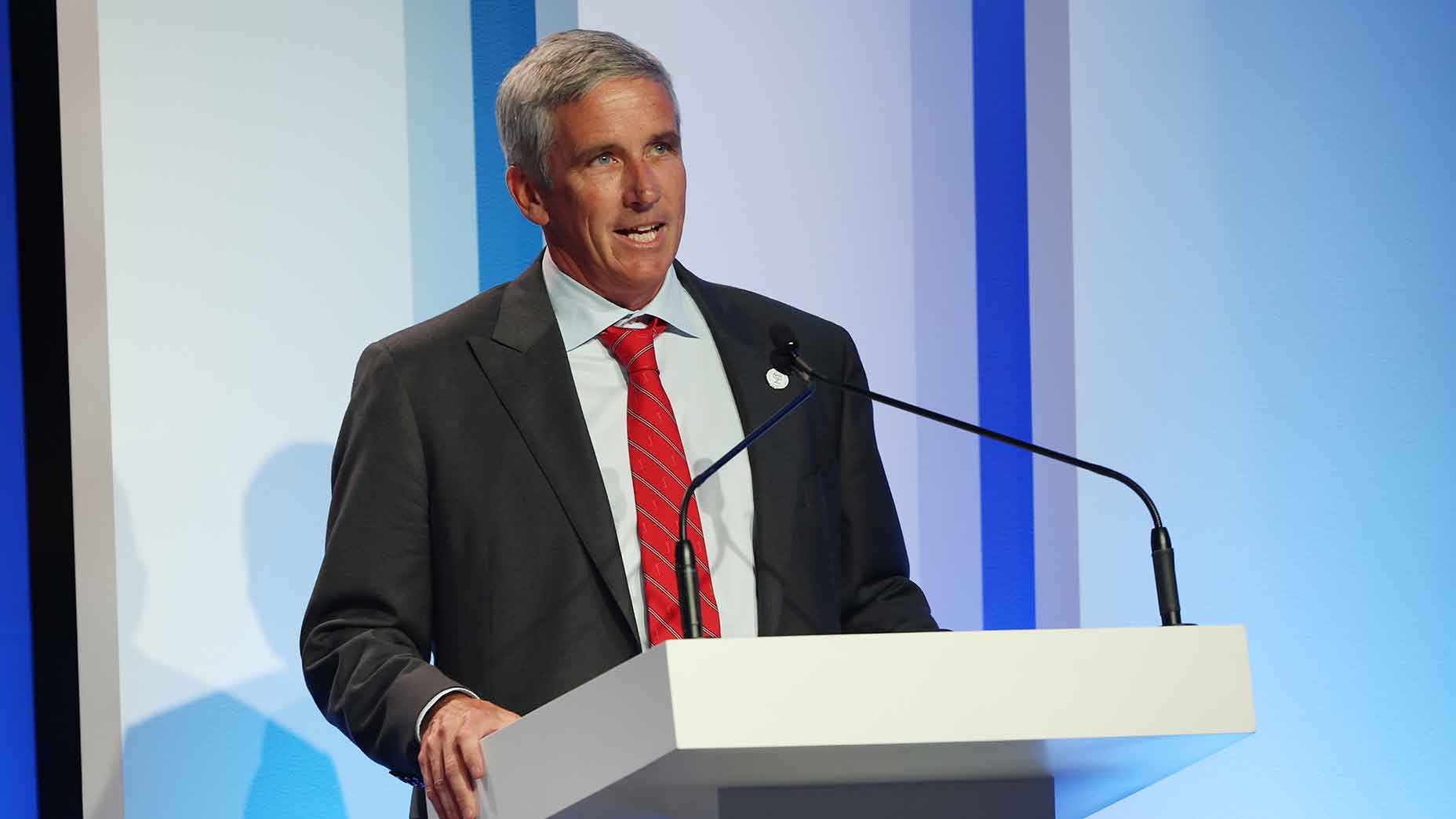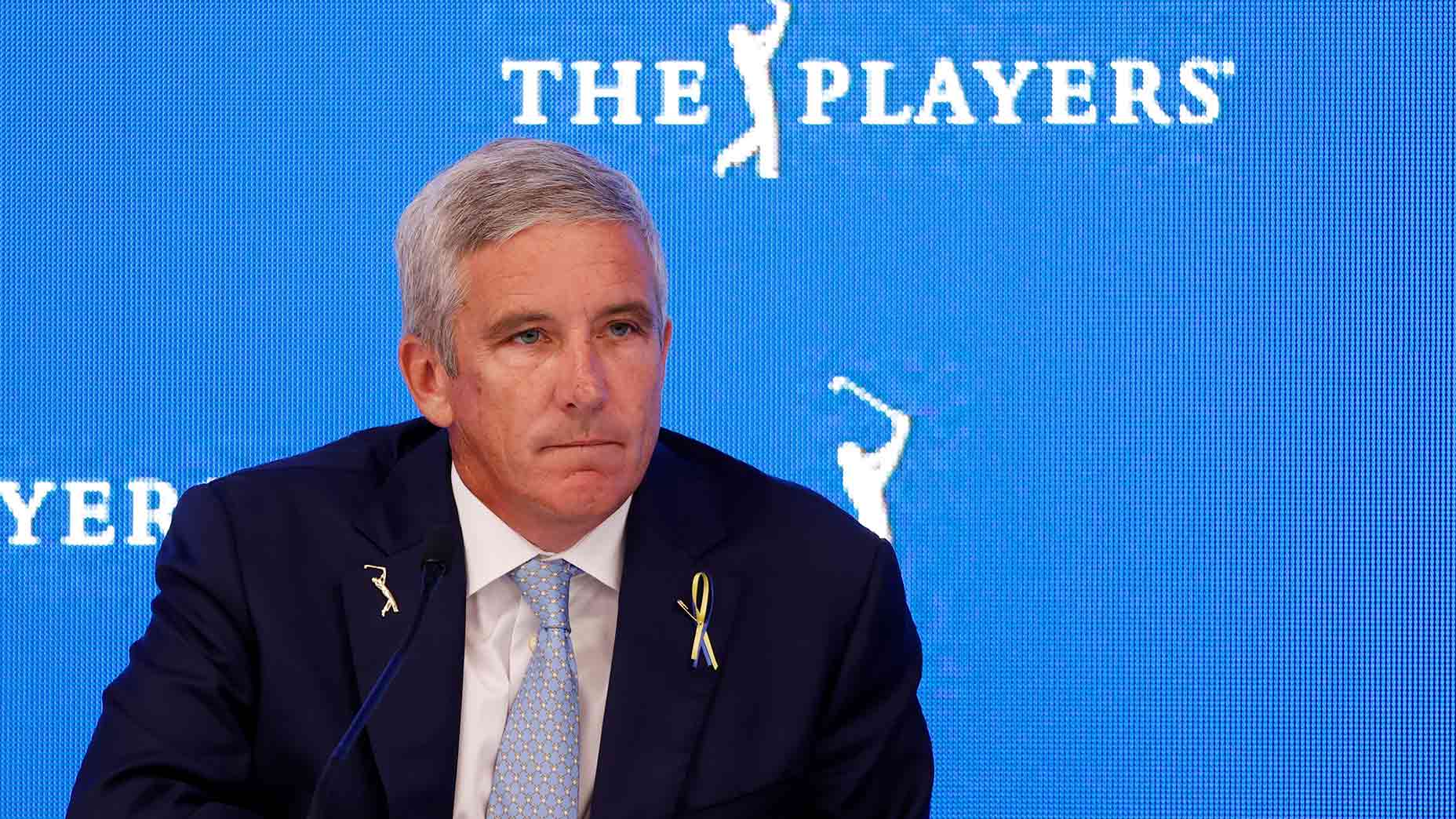
Jay Monahan has stewarded $165 million in purse increases in the last two seasons, but from where?
Getty Images
PONTE VEDRA BEACH, Fla. — If ever a moment crystallized the PGA Tour’s recent struggles with transparency, it came last November.
It was then, just days before Thanksgiving, that the PGA Tour sent a memo to players announcing it was raising the overall prize money pool by $105 million for the 2022 season, citing $70 million in increased earnings and $30 million drawn from the mysterious “PGA Tour reserves.”
From Tour commissioner Jay Monahan’s perspective, the announcement was nothing shy of a slam-dunk. For the second time in two years, the PGA Tour had managed to increase overall purses during the course of a pandemic that had been financially ruinous to pro sports leagues.
Players had badgered the Tour for more money, and boosts to overall purse payments represented concerted efforts in rewriting the script. And if larger purses alone weren’t enough, the Tour created programs — the Comcast Business Tour Top 10 and Player Impact Program — designed to directly address financial concerns voiced by big-name players.
But when the Tour announced the changes, the reaction was decidedly mixed.
Sure, it was great that with the snap of commissioner Monahan’s fingers, players stood to make an added $105 million in 2022. In two years, the Tour had increased purses by $165 million, bringing the overall number just shy of half a billion annually. But where on earth was all the money coming from? Wasn’t the Tour already maximizing its efforts to give players the whole of what they’d earned?
In decrying the Tour’s “obnoxious greed” in January, Phil Mickelson cut to the heart of the issue — accusing the Tour of increasing purses at its own discretion and withholding money from players in its reserves (the “slush fund,” as Phil later called it on Twitter).
“They would rather throw $25 million here and $40 million there than give back the roughly $20 billion in digital assets they control,” Mickelson said at the time. “Or give up access to the $50-plus million they make every year on their own media channel. There are many issues, but that is one of the biggest.”
The truth, according to Tour commissioner Jay Monahan, is far less exciting. At his annual Players Championship press conference, Monahan explained the vast majority of the jumps were due to the timing of the Tour’s media rights deals, which went to effect on January 1.
“When we went into our rights discussions, which again, ended at the end of 2019 into 2020, those rights start getting paid January 1 of this year,” Monahan said. “So when you go back to our board meeting in late 2019, we were talking about, ‘How do we allocate the additional resources to the membership?’ And as you’ve seen, every single person on the PGA Tour has grown, but if you look at the FedExCup, the Comcast Top 10, the Player Impact Program, Play 15, you look at our WGCs, our invitationals, the Players, we have invested money back in all of our championships.”
In fact, Monahan argued, the purse increases would not have been possible if not for the Tour’s efforts to expand the breadth of its schedule and its streaming product. The result was a new batch of television rights deals with NBC and CBS worth billions through the end of the decade, which gave the Tour extra funding to share with players.
“We made the decision that [the schedule] was something that we wanted to change, and that’s not so simple,” Monahan said. “We worked very closely with the PGA of America. The PGA of America made the decision to move the PGA Championship back to May. We moved the Players here to March, and that put us in a very strong position as it related to media rights.”
As for the Tour’s reserves, Monahan was less specific, indicating the Tour’s decision to withdraw an additional $30 million for funding purses was made “well in advance” of this year, and was driven by the Tour’s desires to “achieve certain benchmarks” — not necessarily the threat of a well-funded rival tour.
But, Monahan said, the reserves played a critical role in helping the Tour survive the financial brunt of the pandemic shutdown without slashing purses. For a billion-dollar operation like the Tour, Monahan said, the reserves amount to an insurance fund for the players.
“The PGA Tour reserves are $225 million,” he said. “They were at a high watermark — about $300 million — prior to Covid. We think that’s a reasonable range to keep our reserves in, in the event of any event like we’ve experienced the last couple years. You just don’t know.”
Ultimately, Monahan’s words reinforced one of his firmed talking points: that players are at the heart of every financial decision he makes. His surprisingly open-handed method of doing so, however, reinforced something else: it’s one thing to say you’ve “got nothing to hide,” but meaning it is another thing entirely.











